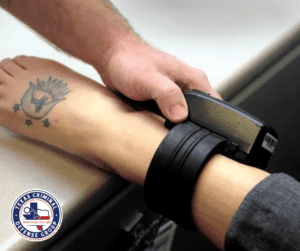
Jail Alternative: House Arrest in Texas
Facing jail time can be overwhelming, but not every conviction leads to spending months or years behind bars. In Texas, courts sometimes offer an alternative: house arrest. This option allows eligible individuals to serve their sentence from the comfort of their own home, avoiding the harsh realities of jail. But how does house arrest work, and who qualifies for this alternative?
If you’re looking for answers, this guide will walk you through everything you need to know about house arrest in Texas, including its benefits, limitations, and what to expect if you or a loved one are considering it as a sentencing option.
Alternative Sentencing Explained
Alternative sentencing is when a court gives a punishment that doesn’t involve going to jail or prison. Instead, the court uses options like probation, community service, drug treatment, or house arrest. The idea is to keep non-violent offenders out of jail while still holding them accountable. People who might need help with problems like substance abuse or mental health issues often receive this type of sentencing in Texas.
Types of House Confinement
When it comes to house confinement or arrest, there are generally three types:
- Full house arrest means you must stay in your home all the time, except for approved activities like going to court, work, or medical appointments. People with more serious offenses or those deemed a higher risk typically receive this strictest form of house arrest.
- Partial house arrest allows you to leave your home for specific activities, but you must inform your pre-trial officer in advance. You can go to work and return home, but jobs that require constant movement, like DoorDash or Uber, are not permitted. If your schedule changes or you work in multiple locations, you must notify your officer and provide a detailed schedule.
- Tracking-only house arrest focuses on monitoring your location without placing strict limitations on where and when you can go. Although you’re required to wear a GPS tracker, it offers more freedom while ensuring compliance with monitoring requirements.
These types of house arrest require compliance with strict rules set by the court, and violations can result in harsher penalties.
Monitoring Devices for House Arrest in Texas
To ensure that individuals comply with house arrest, Texas courts use various monitoring devices. These include:
- Electronic Ankle Bracelets: These devices are widely used for monitoring and tracking the individual’s location with GPS. Authorities receive an immediate alert if the person leaves a permitted area.
- Telephone Monitoring: To confirm their presence, some individuals must regularly check in via phone calls, often using a landline at home.
- Biometric Devices: These systems require regular identification checks, like fingerprint or voice recognition, to ensure the person is at home.
- GPS Monitoring: This method allows authorities to continuously track an offender’s location in real time.
The type of device used depends on the severity of the crime and the conditions set by the court.
Eligibility for House Arrest
Not everyone qualifies for house arrest in Texas. Courts generally reserve this option for non-violent offenders who are considered low-risk to public safety. Factors that influence eligibility include:
- Non-violent offenders
- Individuals without a lengthy criminal history
- First-time offenders
- Defendants convicted of DWI
- Those convicted of simple drug possession
- Defendants with stable employment that they might lose if incarcerated
- Juveniles living with parents or family members
While meeting one or more of these criteria doesn’t guarantee house arrest, it can increase the likelihood that a judge will consider this option. For instance, a judge might be more inclined to grant house arrest to a non-violent, first-time offender with a steady job, allowing them to continue supporting their family while serving their sentence from home.
Violating the Terms of House Arrest
Violating house arrest conditions can have serious consequences. Someone could face immediate arrest and jail time if they leave their approved area without permission, interfere or tamper with their tracking device, or disregard other rules. Texas courts treat these violations seriously and may impose stricter penalties than those given in the original conviction.
Other Alternatives to Incarceration Available in Texas
House arrest is one option among several alternatives to jail time in Texas. Other options include:
Probation: Instead of going to jail, individuals on probation must follow certain rules, like checking in regularly with a probation officer and participating in rehabilitation programs.
Community Service: Some offenders may be required to complete a set number of hours working for the community as part of their sentence, allowing them to avoid jail.
Drug Treatment Programs: For those struggling with drug and alcohol abuse, courts might order participation in drug treatment programs instead of jail.
Mental Health Treatment: Individuals with mental health issues may be required to get treatment instead of serving time in jail, which will help them receive the care they need.
Fines and Restitution: Paying penalties or compensating victims can be an alternative to jail, especially for non-violent crimes.
These alternatives help reduce jail and prison overcrowding while addressing issues like substance abuse and mental health problems that may contribute to criminal behavior.
Arrested? Don’t Plea, Call Me!
Facing criminal charges? Jail time may not be your only option. Discover how alternatives like probation, community service, drug treatment programs, mental health treatment, and financial restitution could be viable options for your case. These alternatives not only help reduce overcrowding in jails but also address the underlying issues that led to your legal situation.
Contact Texas Criminal Defense Group today to discuss your options and find the best path forward. Our experienced team can help you navigate these alternatives and advocate for a solution that supports your rehabilitation and future success. Don’t face this challenge alone—reach out to us for expert guidance and support.
